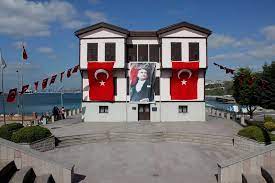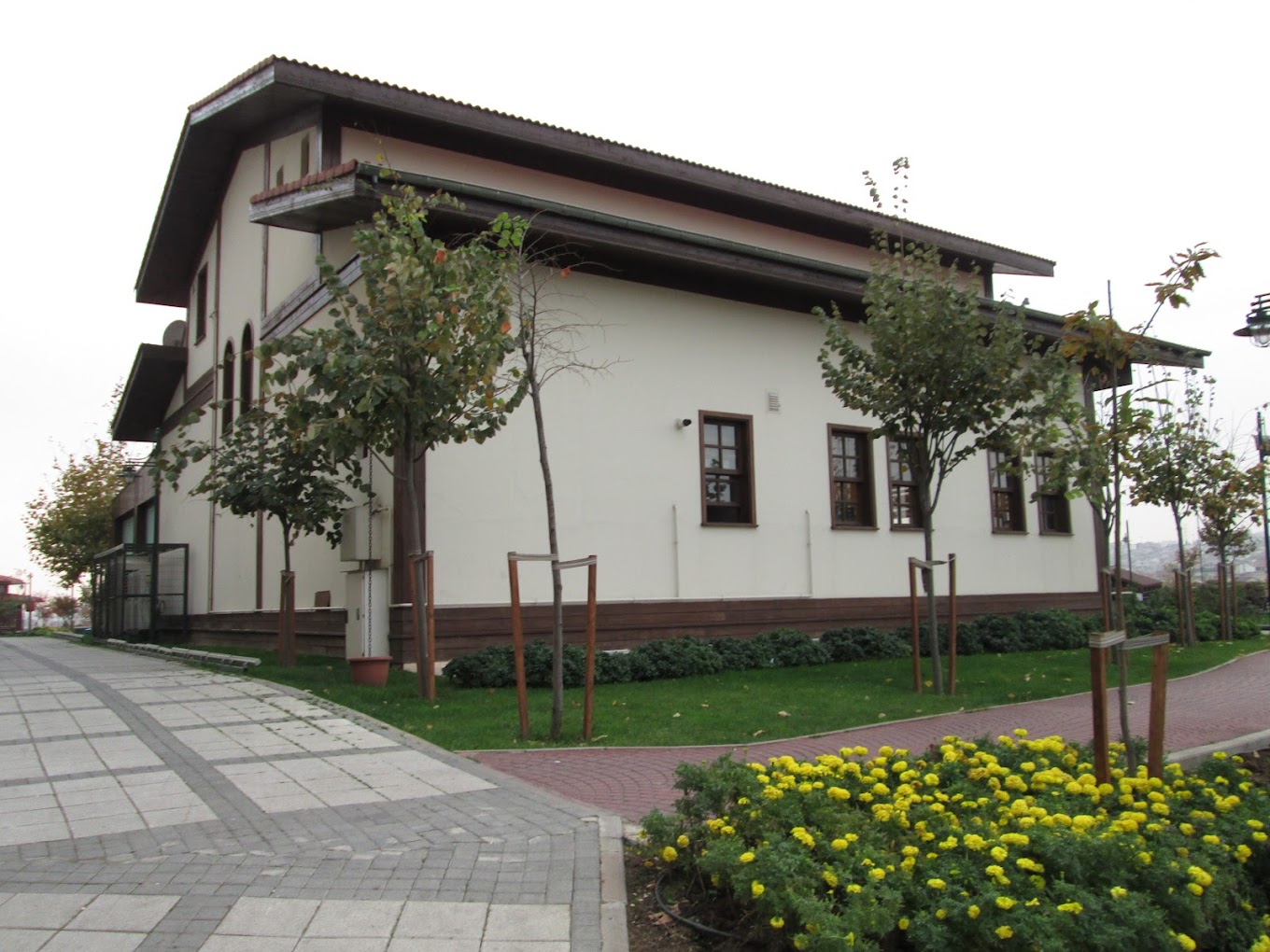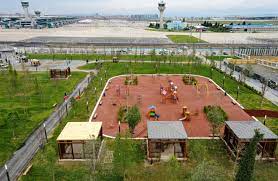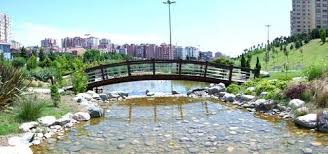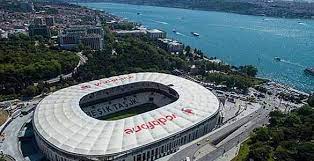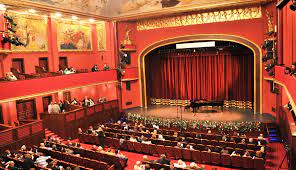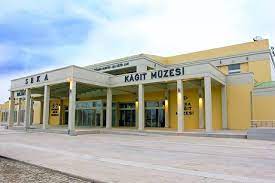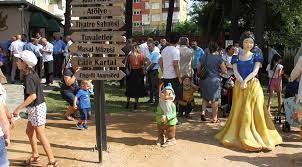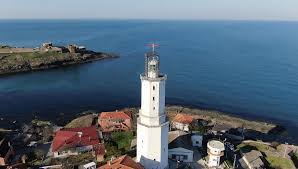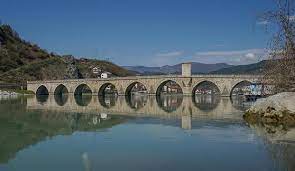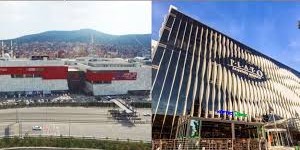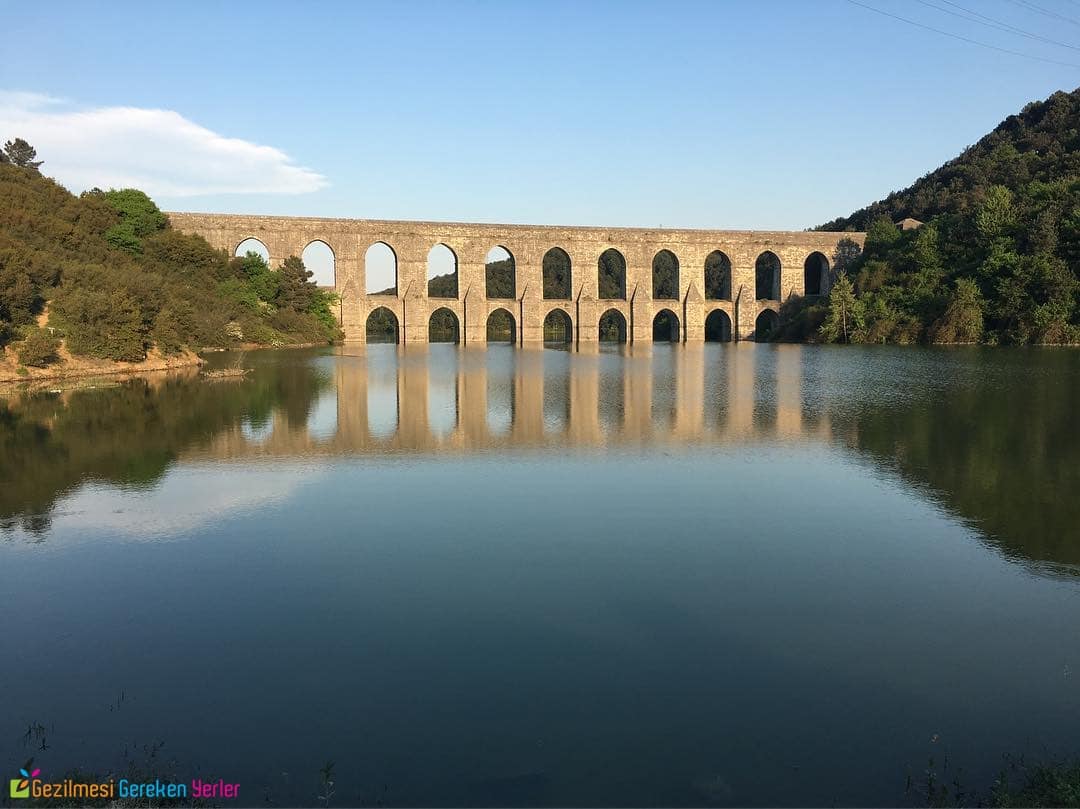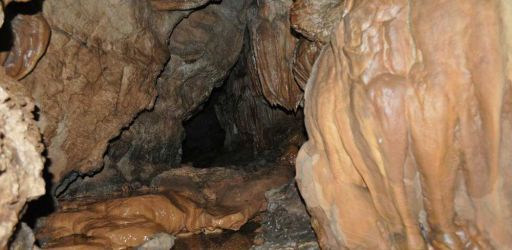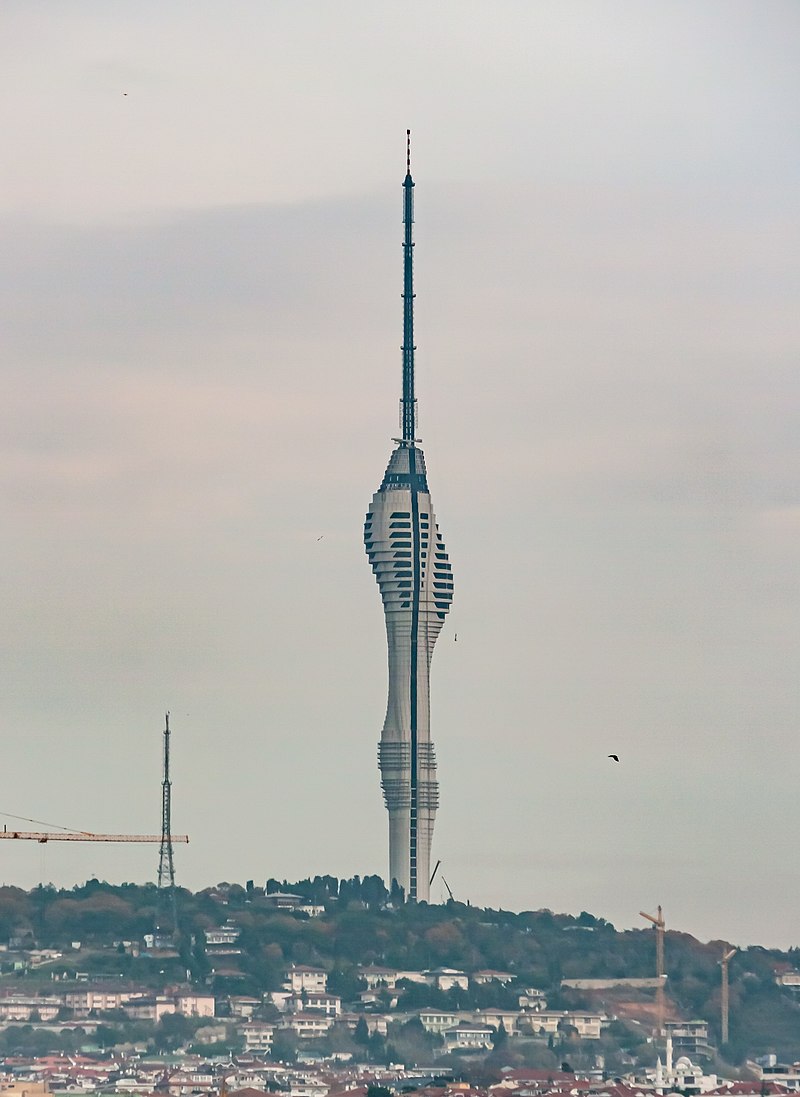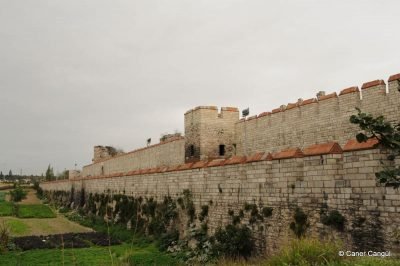Places to Visit in Sisli
Places to Visit in Sisli
- Sisli
While Sisli was a parish of Beyoglu, it was elevated to the status of a district in 1954.
Kagithane, which was separated from Sisli in 1987, gained the status of its own independent district.
Sisli became a district with 28 neighborhoods, but with the Law No. 6360 published in the Official Gazette on 06.12.2012, Huzur, Maslak and Ayazaga neighborhoods were connected to Sariyer district, and it reached its current position with 25 neighborhoods.
Despite being a district of a historical city like Istanbul, Sisli is a relatively new residential area.
In 1850, Sisli was generally known as an area full of empty land, vineyards, gardens and orchards.
However, with the opening of settlement in the middle of the 19th century, the construction process in the region accelerated.
One of the important periods in the history of Sisli was the introduction of the electric tram that reached Sisli in 1913.
This contributed to the rapid development of Sisli and increased the importance of the district.
Throughout history, Sisli has been the favorite choice of famous foreign riches, Ottoman pashas and intellectuals of the period; for this reason, the district has a rich history of various cultures and social classes.
Founded in Bomonti in the early 19th century, the brewery has made a significant contribution to the development of the region.
In the same period, health institutions such as Sisli Etfal Hospital were also opened.
In the development of Sisli, the arrival of the electric tram to Sisli, the establishment of industrial facilities and the operation of health institutions played an important role.
The construction of the district gained momentum in the 1960s and 1970s, and then evolved into a structure that mainly includes trade, business, entertainment and nightlife.
Today, Sisli is positioned as one of the important business and financial centers of Istanbul, it has become a dynamic center of city life with urban transformation projects and modern infrastructure.
Important buildings in Sisli's rich history include Ferikoy Oven Street, Siracevizler Street, Abide-i Hurriyet Monument, Ataturk Museum, Sisli Mosque, and many cultural and commercial centers.
In addition, the district; It is home to cultural and educational institutions such as theaters, cinemas, convention halls, and universities.
The district is home to important venues such as Lutfu Kirdar Congress Hall, Cemal Resit Rey Concert Hall, Open Air Theater, City Theaters Harbiye Stage, Military Museum, Istanbul Technical University, Marmara University and some units of Yildiz Technical University.
There are hotels, workplaces, cultural and commercial centers in the large blocks built in place of the old tram line extending from Sisli Mosque to Büyükdere Street and the IETT garage.
Cinemas and entertainment venues in the large two-sided arcades on Halaskargazi Street add vitality and character to the district.
Sisli is not only a district, but also a lifestyle.
Sisli, a modern and history-filled district adorned with its social and economic riches, is taking decisive steps towards its goal of becoming the business and financial center of Istanbul and Turkey.
Ready to explore?
Places to Visit in Sisli
- Sisli Mosque
Sisli Mosque is a place of worship designed by Vasfi Egeli and built and opened between June 1945 and June 1949.
The mosque is located on an islet at the intersection of Halâskârgazi Street and Abide-i Hurriyet Street.
This building, which is the first mosque built in Istanbul after the proclamation of the Republic, was designed in the classical Ottoman style, separating it from the architectural diversity of Sisli at that time.
Sisli was home to hundreds of buildings of different heights and sizes in neo-classical, beaux-arts, art-déco, art-nouveau, cubic styles in those years.
However, the Sisli Mosque stands out with its location at the point where the Mosque plot of Halâskârgazi Street is located, providing this important urban artery with a dominance that other buildings cannot reach.
- Tesvikiye Mosque
The history of the Mosque in Tesvikiye has a great richness.
The first masjid, built by Sultan Selim III in 1209, was located on the site of today's Mosque.
However, it was expanded and completely renovated by Abdulmecid in 1270 and made into a larger structure.
Later, by order of Abdulhamid II, the Mosque was restored once again.
However, since Abdulhamid II did not want to demolish the work of Sultan Abdulmecit, a new structure was added in front of the old building and a dome was added on it.
In addition, a new minaret was built instead of the existing minaret and additions were made to the last congregation place of the building and to the two hunkar mahfil.
Krikor Amira Balyan is considered to be the first architect of this historical monument.
During the reign of Abdulmecid, Garabet Balyan and his son Nikogos Bey worked together and played a role in the restoration in 1294.
Likewise, the renovation process in 1309 was carried out by Young Yorgi Kalfa and Yuvan Efendi.
The inscription on the door states that the building dates back to 1209.
Since the mosque is built on a sloping land, the south side has a structure that rises above the basement.
In the engagement stones built by Sultan Abdulmecit, it is emphasized that the establishment of a neighborhood here was encouraged by the sultan.
For this reason, it is known that the name "Tesvikiye" originates from the promotion of settlement in the region.
This historic mosque remains important not only as an architectural beauty but also as a historical heritage and a cultural symbol.
- Harbiye Military Museum and Cultural Site Command
Harbiye Military Museum and Cultural Site Command stands out with its rich collection and diversity, which is considered one of the leading museums in the world.
The origins of the museum date back to the 15th century.
After the conquest of Istanbul by the Turks in 1453, the Hagia Irene Church was used as a warehouse called "Cebehane" and valuable war weapons, tools and equipment were collected here.
In 1726, a new order was brought to the material in Cebehane and a new organization was established under the name of Dar-ul Esliha.
The foundation of Turkish museology in the modern sense was laid with the efforts initiated by Tophane Musiri Ahmet Fethi Pasha in 1846, and this history was accepted as the first establishment of Turkish museology and the Military Museum in the real sense.
The porticoes in Hagia Irene were closed with windows and turned into an exhibition area.
In these places, collections of old war weapons, tools and equipment, as well as collections of archaeological artifacts were exhibited.
After Ahmet Fethi Pasha, these collections were named "Museum" for the first time and named Muzeyi Humayun.
After the establishment of the museum organization, especially with the increase in the number of archaeological artifacts, these artifacts were moved to the Tiled Kiosk and the foundation of today's Istanbul Archeology Museums was laid.
Ahmet Muhtar Pasha enriched his weapon collections with advertisements and official correspondence.
With its library, cinema, shooting range, publications, clothing room and mehter, a qualified museum has been created in accordance with today's contemporary museology approach.
The Military Museum, which continued its activities until 1940, took a break for a while with the thought that the Second World War could spread to Turkey.
After the danger of war disappeared, the works stored in the Macka Armory in 1949 started to be exhibited again in the Military School Gymnasium building as of 1959.
However, this building became insufficient for the collections of the Military Museum over time and was not suitable for development in the contemporary sense.
For this reason, as a result of the restoration works that started in 1966, the old Harbiye building was arranged to be used as a Military Museum and was opened to visitors on February 10, 1993.
- Sisli Ataturk House Museum
Built in 1908 by Osep Kasabian in the Art Nouveau style, this historical building witnessed the life of Turkey's great leader Mustafa Kemal Ataturk.
Mustafa Kemal Ataturk lived in this house with his mother, sister and aide-de-camp from December 1918 until he set off for Samsun in May 1919.
The building, which is known as the "Pink House" in Mustafa Kemal Ataturk's memoirs, came to the fore with its pink exterior paint and is also known as the "Revolution Museum" over time.
The house, which was purchased in 1924 by the wife of the former Izmir Governor Tahsin Uzer, was purchased in 1928 by the Istanbul Metropolitan Municipality to be converted into a museum.
The building, which was opened to visitors in 1942 under the name of "Atatürk Revolution Museum" by the Governor and Mayor of Istanbul at the time, Lutfi Kirdar, was restored in 1977 and restarted its activities as the "Ataturk Museum" in 1981.
After a restoration in 2014, the museum was reopened in its current form in 2015.
The museum offers visitors a rich collection of Ataturk's personal belongings, uniforms, photographs, handwritten documents, souvenirs and oil paintings of important painters.
This museum, which witnesses the life and revolutions of Ataturk, offers a unique experience to its visitors in a historical atmosphere.
- Sisli Science Center
On September 27, 2005, Sisli Science Center, Turkey's third science center, was opened with the joint initiative of the Turkish Science Centers Foundation and Sisli Municipality.
Sisli Science Center hosts more than 80 experimental units; It aims to provide its visitors with information about the basic branches of science through experimental units in the fields of biology, physics, mathematics, chemistry, geometry, mechanics, brain, space and illusions, electronics.
In line with the goals of the center, units in various branches such as giant microscopes, physics units, intelligence games, a tree dating back 20 million years, a black hole, a planetarium, physics units, fire and earthquake training unit have been created and these units; It was supported by internet training programs, experiments, meetings and conferences, and project competitions.
The Science Center has served more than 350,000 people with the aim of instilling science and technology in visitors.
With its rich content and interactive experiences, it has reached a wide audience by presenting science in a fun and instructive way.
- Macka Democracy Park
Macka Democracy Park is known as a pleasant area that offers an atmosphere intertwined with nature and city life.
It was put into service in 1950 and has been restored over time due to historical interactions.
The main roads of the park have been improved and the green areas have been highlighted, increasing the overall aesthetics and quality of use.
The park is spread over a wide area covering Dolmabahce, Macka, Nisantasi and Harbiye regions and is located in the congress valley.
The fact that it is within walking distance of the important points of the district has made the park one of the important recreation and entertainment centers of people.
The park offers a green space enriched with various species of trees; It is decorated with linden, hornbeam, sycamore, poplar, chestnut, boxwood, walnut and oak trees.
In addition, there are useful features such as sports fields, food and beverage units, and artificial pools in the park.
Kucukciftlik Park, one of the oldest casinos in Istanbul and an important venue for outdoor activities today, is also located in this area.
Macka Democracy Park, which offers visitors the opportunity to have a good time, is an open-air venue that appeals to various needs with its natural beauties, sports facilities and social activities.
- Sisli Radio House
On May 6, 1927, Istanbul Radio made its first broadcast in the basement of the Grand Post Office Building in Sirkeci.
However, in line with the growing needs over time, a search for a new place was made due to the inadequacy of the existing place and an architectural competition was organized for this purpose.
After the competition in 1939, which was won by the project of Dogan Erginbas, Omer Guney and İsmail Utkular, the construction started on November 11, 1945 and on November 19, 1949, the Republic of Turkey 2. It was put into service by President İsmet İnonu.
This building is one of the important symbols of the architecture of the Early Republican period.
The four-story building houses the ground floor and first floor studios, record and film receiving units, and program service offices.
On the other floors, there are the main command and control rooms and technical and administrative service offices.
While the building draws attention with its rectangular plan, there is a courtyard in the middle.
Sisli Radio House opens its doors to visitors 24 hours a day and serves as a place that stands out with its historical and cultural importance.
- Bomonti Brewery
Bomonti Brewery has an important position as the first facility in Turkey to give its name to the district it bears its name and to start operating with modern beer production technique.
Founded in 1885 by Swiss brothers Adolf and Walter Bomonti as a small brewery in Ferikoy Bomonti, the plant was transformed into a larger factory in 1893.
The factory, which moved to its current location in 1902, started to produce sub-fermentation beer for the first time in Turkey with the addition of a cooling facility in 1908.
However, as a result of a law enacted in 1926, the production of alcohol by private enterprises was prohibited, so in 1938, the Bomonti Brewery was transferred to the Monopoly Administration of the period.
The factory, which started operating again in 1940, produced until 1991.
The Bomonti Brothers not only established a production facility, but also opened the Bomonti Beer Garden, causing significant impacts on neighborhood culture and daily life.
Today, the surviving structures of the Bomonti Brewery have been transformed into cultural and artistic venues and host units such as the Ara Guler Museum, food and beverage venues, concert and event hall in the area known as Bomontiada.
However, some additional buildings, which were transferred to the Presidency of Religious Affairs by the Regional Board for the Protection of Cultural Heritage in 2019 and demolished in 2020, caused losses in terms of the historical and industrial heritage of the complex.
- Cemil Topuzlu Open Air Theatre
Darulbedayi-i Osmani is the institution that forms the basis of the City Theaters and was established in 1914 by the decision of Mayor Cemil Topuzlu.
Darulbedayi, which means Ottoman House of Beauty, started as an educational institution under the management of famous French theater figures such as Andre Antoine.
However, due to the outbreak of the First World War and the fact that France and the Ottomans were on opposite sides, Antoine returned to France shortly after.
Darulbedayi, which recovered with the efforts of Rasit Riza, started to select its students by exam.
Darulbedayi continued to work under the name of "Drill Stage" in Letafet Apartment in Sehzadebasi and later operated in Tepebasi Theater.
In January 1916, it became a professional theater company with the play "Rotten Foundation".
City Theaters have brought many important names to Turkish theater by opening their curtains on different stages.
Names such as Muhsin Ertugrul, Halit Fahri Ozansoy, Behzat Butak, Ali Naci Karacan, Peyami Safa, Emin Belig Belli, Celal Sahir are among Darulbedayi's students.
The City Theaters were officially connected to the Istanbul Municipality in 1931 and since 1934 they have been renamed "Istanbul Municipality City Theaters".
Children's Theater practices, which were initiated by Ferih Egemen and Kemal Kucuk in 1935, are important for the children's theater in Turkey.
In addition, City Theaters have carried out important works in Turkish Cinema and other fields of art in parallel with the changes in Turkish theater.
Today, the City Theaters serve around 3500 Istanbul audiences.
Stages include Harbiye Muhsin Ertugrul Stage, Kadikoy Museum Gazhane Prof.Dr. Sevda Sener Stage, Fatih Resat Nuri Stage, Gaziosmanpasa Stage, Uskudar Musahibizade Celal Stage, Kagithane Sadabad Stage, Beylikduzu Fatih Sultan Mehmet Culture and Arts Center Rasim Oztekin Stage and others.
- Monument of Liberty
II. The Monument of Liberty was built in memory of those who lost their lives in the March 31 Incident that took place during the Constitutional Monarchy.
The monument is located on Sisli's Hurriyet-i Ebediye Hill, next to the Palace of Justice.
The March 31 Incident started on April 13, 1909 on March 31, 1325 according to the Rumi calendar and lasted for 13 days.
The Abide-i Hurriyet Monument is also known as the Hurriyet-i Ebediye Monument and has the distinction of being the first national monument built in Turkey.
The monument was built on the project of the famous architect Muzaffer Bey, who won the competition held in 1909, and its opening was held on July 23, 1911.
Marble and cut stone materials were used in the construction of the monument.
The monument is located on a raised floor and is reached by wide stairs.
The body of the monument is designed in the form of a ball rising towards the sky.
On one side of the monument, there are reliefs with rifle bayonets and a waving flag motif.
The lower part of the monument is arranged as a masjid, and this area can be descended by passing through an arched door containing an inscription.
The Monument of Liberty, which is also used in the logo of Sisli Municipality, has become one of the important symbols of Sisli.
In the same area, there are Mahmut Sevket Pasha Tomb, Enver Pasha Mausoleum, Mithat Pasha Mausoleum, Talat Pasha Mausoleum and the tombs of some important personalities.
- Sisli Aya Dimitri Greek Church
Istanbul St. Dimitrios Church is located in the Kurtulus district of Sisli today.
Although it is unclear when the church was built, some sources from the end of the 16th century mention the existence of this church.
This church, which contributes to the historical texture of Istanbul, has witnessed various historical events.
In 1862, in Skarlatos Byzantios' work "Istanbul", it is stated that after the Hagia Dimitri Church in the vicinity of Kasimpaasa was converted into a mosque, the Greek shipyard workers moved the icon of St. Dimitrios in the church to the Hagia Tanas Church in the Tatavla district.
In addition, in the book "Tatavla" by Pamfilos Melinos, it is stated that the church in the Kasimpasa region did not turn into a mosque and that the church in Kasimpasa was abandoned after the Greek population settled in Tatavla.
When entering the courtyard from the main gate of the church, it is stated that there is a "Hagia Haralambos Church" on the right, and it is stated that this building is older than the Hagia Dimitri Church and was called "Hagia Tanas" in the 16th century.
In the marble inscription on the outer wall of the church, there is information that an important repair was carried out in 1726.
It is also noted that in 1720 the garden walls were built, while between 1751 - 1754 and 1798 significant additions were made.
Among the architectural features of the Hagia Dimitri Church, the wood-carved and gold-plated "iconostasis" stands out, which separates the naos part reserved for the congregation and the Ieron Vima "Bema" part, where the religious ritual is performed.
In addition, artistic elements such as the iconostasis built in the 18th century, the wood-carved and gold-plated tronos "bishop's chair" and the ambon sermon "pulpit" are the remarkable elements of the church.
Today, the Hagia Dimitri Church, which serves as the central church of the Kurtulus Greek Community Foundation, is open to worship every day of the week.
- Bulgarian Exarchate - Bulgarian Church
In 1845, Stefan Bogoridi, a statesman of Bulgarian origin, made a written application to the government for the establishment of an Exarchate, a "Bulgarian Church", a printing house and a school in Istanbul.
Her application was initially rejected, but after Bogoridi's determined efforts, permission to establish an independent church was obtained on 28 February 1870, by a decree issued by the Bab-i Ali.
When permission was obtained, permission was granted to establish a "priest's house" in the Ortakoy neighborhood first.
Bogoridi's efforts in 1870 laid the foundations of the Bulgarian Exarchate.
An independent church was not allowed in the first place, but this effort paved the way for the establishment of the church later.
The Exarchate moved to Sisli by purchasing a mansion built in the late 19th century.
This mansion, which was purchased by Exarch Yosif I in 1907, is the building of the Bulgarian Exarchate, which is still used today.
The architecture of this building in Sisli is in a large garden with four floors.
The building, which was built using a wooden frame, was designed in an eclectic style.
The details of the building, such as stained glass windows, wood-carved eaves, column capitals and stonework, are architecturally impressive.
The building of the Bulgarian Exarchate still represents the Bulgarian Patriarchate today.
- Saint Esprit Cathedral
Located in the courtyard of Notre Dame de Sion, French High School, the building was built in 1846 by Monsignor Hillereau.
The first design of the church belongs to the famous architect Gaspare Fossati, but in 1864 it was decided to rebuild the church due to extensive damage to the roof.
The reconstruction process was directed by the priest Antoine Giorgiovitch and in 1876 it was declared a church - cathedral.
The church has been restored many times over time, and in 1980 all the paintings in its interior were renovated by Father Antoine Marovitch.
In the courtyard of the church, Papa Francis 15. There is a statue of Benedictus.
The statue depicts the Papa holding a roll of paper symbolizing "Just Peace" in his left hand and slightly raised for blessing in his right hand.
Designed by Ouattrini, the statue was unveiled in 1921.
The western façade of the building has a symmetrical and stepped design.
There is a large entrance door on the central axis and two small entrances on the sides.
There are balconies along two floors on the side axes.
The middle axis ends with a triangular form and is decorated with colonnades.
The details on the façade, which include reliefs with floral motifs, mosaic embroidered decorations and religious depictions, are remarkable.
The building has 3 naves and a basilica plan.
The naves in the interior, separated by columns with Ionic capitals, contain intense decorations, religious figures and paintings.
There are also rich decorations on the apse section, walls and ceiling.
The area below the church is home to the catacombs of the church's founder, Monsignor Hillereau, and other important Christian figures.
- Sisli beth Israel Synagogue
Sisli Beth Israel Synagogue was built in the 1920s and emerged with the arrangement of a yarn factory, which was used as a parking lot at that time and served the Jewish community in Sisli.
However, due to the rapid increase in the Jewish population in the Nisantasi and Sisli districts in the 1950s, it was decided to purchase the land where the synagogue is currently located.
Galata – Beyoglu – Kasimpasa – Sisli Community Board of Directors Neve Shalom Foundation organized a project competition for the new synagogue building.
Construction began in 1951 with the project won by architects Aram Deregobyan and Jak Pardo.
On January 25, 1952, the groundbreaking ceremony was held.
Ceremonies such as Rosh Hashanah and Kippur were held in the building.
The inscription "Kal Kadosh Beth Israel" on the door of the synagogue was written by Aram Deregobian.
The papier-mâché in the interior and the six-pointed star on the Ehal were made by the famous papier-mâché master Onnik Cezarliyan.
The five relief stones on the facade of the building symbolize the "Ten Commandments".
The upper part of the rectangular central space is covered with a blue vault representing the sky.
In 1961, the Mikveh, a pool for ritual purposes, was added to the synagogue.
However, on November 15, 2003, it was badly damaged as a result of the "explosion" that occurred in front of the back door of the synagogue on Nakiye Ergun Street.
After necessary renovations, it was reopened in January 2004.
- Sisli Cevahir Shopping Mall
"Life Passes Through Cevahir!" Istanbul Cevahir Shopping and Entertainment Center, known for its slogan, opened its doors on October 15, 2005 and became one of the leading shopping and entertainment centers worldwide.
It is one of the largest and most entertaining shopping malls in Turkey with its 6-storey indoor car park with a capacity of 2,500 vehicles.
Istanbul Cevahir offers visitors a perfect shopping experience by hosting more than 200 brands.
Various experiences such as movies in theaters, delicious tastes, and a spacious gym offer a brand new lifestyle to guests in Istanbul Cevahir.
Istanbul Cevahir Shopping and Entertainment Center is located in the metropolitan area of Istanbul with its strategic location.
The center, which operates in a strong organized retail field with its store range consisting of distinguished brands, is an important support point for national and international brands.
It continues to serve domestic and foreign visitors with more than 200 brands for 365 days, every day of the year.
- Ferikoy Ustun Palm Patisserie
Ustun Palmiye Patisserie, located on Ferikoy Baruthane Street, is flooded by visitors, especially during the Easter period.
When the Easter celebrations of Orthodox and Catholic people coincide, approximately 3 thousand tons of Easter buns are produced.
In addition, it is known for the production of liqueur chocolate in Turkey, which is carried out only by Baylan Patisserie and Ustun Palmiye Patisserie.
Their large rabbit-shaped chocolates are also quite famous.
This place, which has long queues in front of it during the Easter period, is one of the rare places that offers special delicacies to visitors.
From Sisli, you can easily reach Istanbul Airport (IST) and Istanbul Sabiha Gokcen Airport (SAW) on time.
Transportation Options: You can easily reach Istanbul Airport (IST) and Sabiha Gokcen Airport (SAW) by using public transportation options, Municipal Buses, Metro and Tram.
Before using these lines, you should check and select the appropriate timetables for your trip on the website.
Air transfer lines: You can reach Istanbul Airport (IST) and Istanbul Sabiha Gokcen Airport (SAW) comfortably and effortlessly with your Airport Transfer reservations made on the Airtransferlines website.
With Airtransferlines, it provides a comfortable, unique Airport Transfer experience with the latest model luxury vehicles.
Click www.airtransferlines.com to take advantage of the advantages of Airtransferlines, to find the right vehicle and driver for you with a wide range of transfer options, to get information about your destination or to make a reservation.
AIRTRANSFERLINES is your personal TRANSPORTATION advisor.
Posts you might like
Are you a professional driver? Become a ATL Driver in your City
Join our driver team and be a part of the global ATL experience. ATL connects you with travelers who need a lift from the airport or port and desire a warm introduction to the city.
SIGNUP NOW!
.jpg?alt=media&token=13da9acd-7e56-46f7-a468-e17016f3de33)


